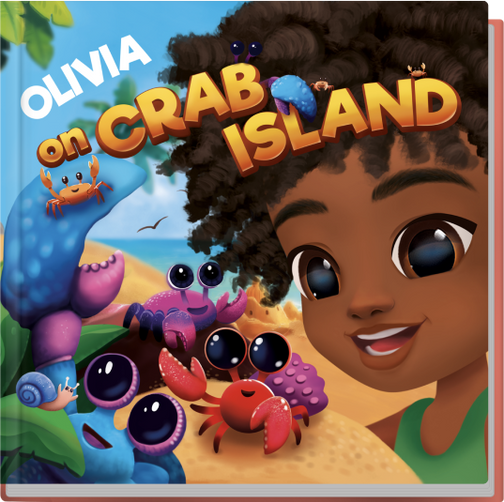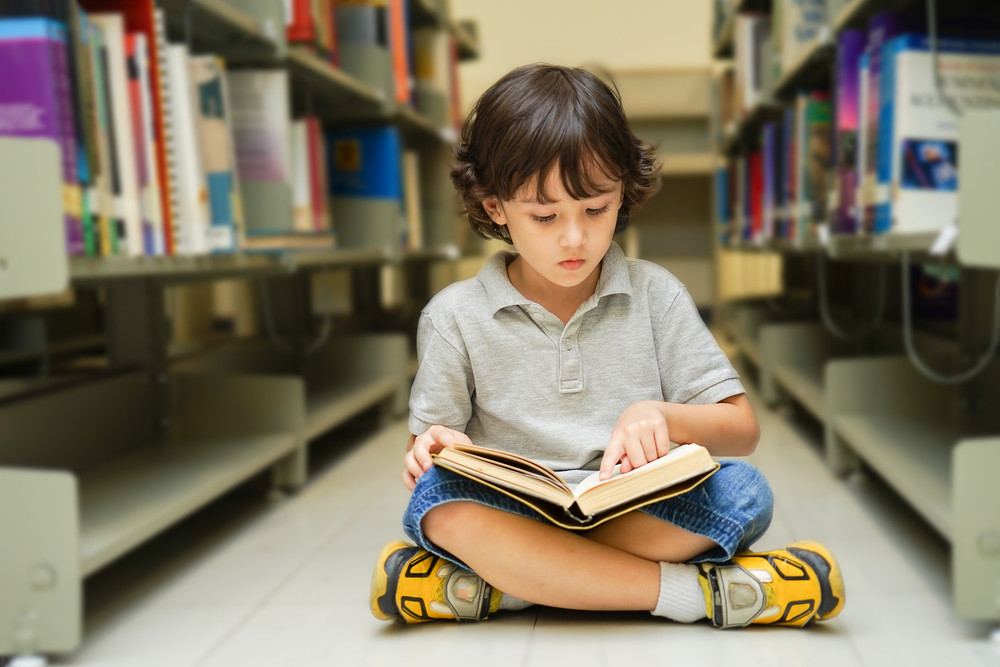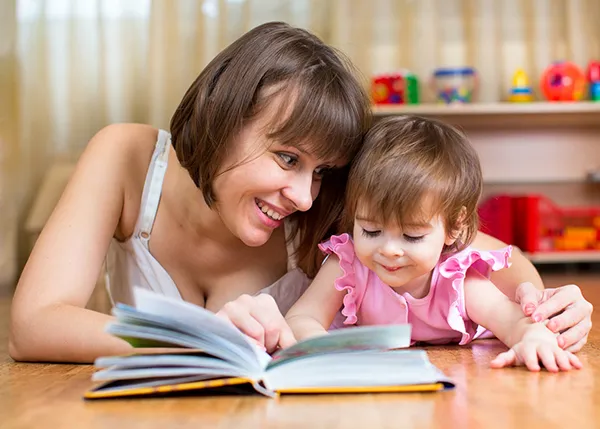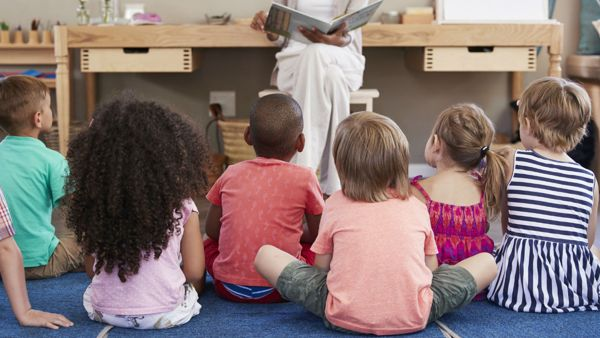Children’s Adventure Books: Unlocking the Magic of Summer Reading

Summertime is the best opportunity to explore the world of captivating stories, the value of reading, and the excitement of books. In this article, we dive into the magic of summer reading and the enchanting tale of “Crab Island” by LionStory. Let’s get on a journey that celebrates the joys of reading and discovery.
The Power of Summer Reading
- Embracing Summer Reading Adventures
Summer reading opens the door to thrilling adventures, mysteries, and fantastic worlds that capture children’s hearts and minds. It’s a time when young readers can explore new lands and embark on journeys beyond their imagination.
- The Educational Benefits of Reading During Summer
Beyond the joy of reading, summer books offer significant educational benefits. They prevent the summer slide, where children may lose academic progress during the break, and instead, reinforce critical reading and comprehension skills.
- Cultivating the Habit of Reading
Introducing children to summer reading cultivates a lifelong habit of enjoying books. When parents and caregivers read with children and set aside time for reading, it fosters a love for literature and continuous learning.
Children’s Adventure Books: A Gateway to Imagination
- Why Adventure Books Hold Endless Appeal
Children’s adventure books are a treasure trove of excitement and wonder. They take young readers on thrilling escapades, full of brave heroes, magical creatures, and epic quests that ignite curiosity and inspire creativity.
- Stimulating Creativity and Curiosity
The vivid descriptions and imaginative settings in adventure books stimulate creativity and expand the horizons of young minds. Children are encouraged to dream, imagine, and envision endless possibilities.
- Life Lessons Found in Adventure Tales
Adventure books often weave in valuable life lessons, such as bravery, resilience, and the significance of teamwork. These stories empower young readers with the knowledge that they too can overcome challenges.

The Value of Reading: Beyond Entertainment
- Enhancing Language and Vocabulary Skills
Reading exposes children to a rich vocabulary and language usage that enhances their communication skills. The more they read, the better their language gets.
- Nurturing Empathy and Emotional Intelligence
Through reading, children gain insights into characters’ emotions and experiences, fostering empathy and emotional intelligence. This understanding helps them relate to others and navigate complex emotions.
- Expanding Knowledge and Understanding
Books are a gateway to knowledge, introducing different cultures, events and perspectives to kids. This broadens their understanding of the world around them and encourages a thirst for learning.
Personalized Books
- The Allure of Personalized Reading Adventures
Personalized books add a unique reading experience because the child’s name and details are added into the story. This personalization makes the adventure truly their own.
- Building an Emotional Connection
Children feel a strong emotional connection to personalized books as they become part of the narrative.
- Creating Your Own Adventure
With personalized books, children can embark on adventures tailored to their preferences. They get to make decisions that shape the outcome of the story, sparking their imagination and creativity.
Children’s adventure books and summer reading open a gateway to imagination, knowledge, and character development. “Crab Island” by LionStory exemplifies the magic of storytelling and its ability to impart valuable life lessons. Through
personalized books, children get to be the protagonists of their own literary adventures, discovering the joy of reading and self-discovery.

“Crab Island”, a personalized children’s book by LionStory.com
FAQs
- What are the benefits of summer reading for children? Summer reading prevents academic regression, enhances language skills, and fosters a love for learning and reading.
- Why are adventure books so popular among children? Adventure books capture young minds with thrilling plots, magical worlds, and brave characters that ignite curiosity and inspire creativity.
- How do personalized books enhance the reading experience? Personalized books create an emotional connection, as children become part of the story, sparking a deeper love for reading.
- What life lessons can children learn from “Crab Island”? “Crab Island” teaches the value of friendship, courage, and unity, inspiring children to overcome challenges with determination.
- Where can I create a personalized book adventure? You can create your personalized book adventure at LionStory’s website: https://lionstory.com/stories/crab-island/create-person?category=well-being-books
The Importance of Personalized Children’s Books for Multicultural Families

In today’s multicultural world, it is essential for parents to teach their children about different cultures and traditions. Personalized children’s books are a great tool to educate children about diversity while also promoting literacy and imagination. In this article, we will explore the importance of personalized children’s books for multicultural families and how they can benefit children’s learning and development.
Benefits of Personalized Children’s Books for Multicultural Families
- Promotes Multiculturalism and Diversity
- Enhances Literacy and Vocabulary
- Encourages Creativity and Imagination
- Boosts Self-Esteem and Confidence
- Helps Children Understand Their Own Identity
- Fosters Empathy and Understanding
Features of Good Personalized Children’s Books for Multicultural Families
- Accurate and Sensitive Representation of Cultures and Traditions
- Inclusive and Diverse Characters and Settings
- Personalized Storyline and Characters
- Engaging Illustrations and Design
How to Choose Personalized Children’s Books for Multicultural Families
- Research the Publisher and Author
- Check the Reviews and Ratings
- Consider the Age and Interests of Your Child
- Look for Books that Represent Your Family’s Culture and Traditions
Tips for Using Personalized Children’s Books in Multicultural Families
- Read and Discuss the Book Together
- Use the Book as a Conversation Starter
- Incorporate the Book’s Themes and Messages in Daily Life
- Encourage Your Child to Write and Illustrate Their Own Stories
Challenges and Considerations for Personalized Children’s Books in Multicultural Families
- Avoid Stereotyping and Misrepresentations
- Address Sensitive and Difficult Topics Appropriately
- Acknowledge and Respect Cultural Differences
- Be Mindful of Language and Vocabulary
Conclusion
Personalized children’s books are a valuable resource for promoting diversity and inclusion in multicultural families. By exposing children to different cultures and traditions, these books can enhance their learning and development while also promoting empathy, creativity, and self-esteem. When choosing personalized children’s books, it is important to consider the accuracy and sensitivity of the representation, as well as the engagement and personalization of the story and characters.
If you want to find the best book for your child, complete our 2-minute test for parents!
FAQs
What are personalized children’s books?
Personalized children’s books are books that are customized with a child’s name, appearance, and sometimes other details such as their hometown or favorite hobbies.
Why are personalized children’s books important for multicultural families?
Personalized children’s books can expose children to different cultures and traditions, promoting empathy and understanding, and also helping children understand their own identity.
What should I look for in a good personalized children’s book for my multicultural family?
A good personalized children’s book should accurately and sensitively represent cultures and traditions, feature inclusive and diverse characters and settings, have a personalized storyline and characters, and engaging illustrations and design.
The Role of Personalized Books in Children’s Development

Personalized books are books that are tailored to an individual child’s interests, age, and even their name. These books offer a unique reading experience that can help children develop their cognitive, emotional, and social skills. In this article, we will explore the benefits of personalized books and how they can be used to support children’s development.
What are Personalized Books?
Personalized books are books that feature a child’s name, age, and interests throughout the story. The child becomes the main character, which creates a sense of personal connection and investment in the story. These books are often designed to be highly engaging and interactive, using colorful illustrations and simple language to capture a child’s attention.
Benefits of Personalized Books
Cognitive Development
Personalized books can help children develop their cognitive skills in a variety of ways. For example, by featuring the child’s name throughout the story, these books can help children recognize and learn to spell their own name. Additionally, personalized books often include educational content, such as counting, colors, and shapes, which can help children develop their early literacy and numeracy skills.
Emotional Development
Personalized books can also support children’s emotional development by helping them explore their feelings and emotions in a safe and familiar context. For example, a personalized book about a child going to the doctor can help the child feel more comfortable and less anxious about the experience. These books can also help children develop empathy and compassion by introducing them to diverse characters and experiences.
Social Development
Personalized books can also play an important role in supporting children’s social development. By featuring a child’s name and interests, these books can help children feel valued and recognized. Additionally, personalized books often include social themes, such as friendship and teamwork, which can help children develop their social skills and build positive relationships with others.
How to Choose the Right Personalized Book for Your Child
When choosing a personalized book for your child, there are several factors to consider. First, think about your child’s interests and hobbies. Choose a book that features characters and activities that your child will enjoy. Additionally, consider the age and reading level of the book to ensure that it is appropriate for your child’s developmental stage.
Conclusion
In conclusion, personalized books can play an important role in children’s development by providing a unique and engaging reading experience. These books can support children’s cognitive, emotional, and social skills and help them explore the world around them in a safe and familiar context. When choosing a personalized book for your child, consider their interests and developmental stage to ensure a positive and meaningful reading experience.
If you want to find the best personalized book for your kid – complete our 2-minute test for parents.
The Benefits of Personalized Books for Kids Learning a Second Language
Introduction
In today’s globalized world, being bilingual or multilingual is becoming more and more important. For parents who want to raise bilingual kids, or for those who simply want to give their children a head start in language learning, personalized books can be an effective tool. Personalized books are books that are tailored to a specific child, incorporating their name, interests, and sometimes even their likeness. When used for language learning, personalized books can provide a unique and engaging learning experience.
What are Personalized Books?
Personalized books are books that are created specifically for a particular child, incorporating details such as their name, age, hometown, and interests. In many cases, the child’s likeness can also be added to the illustrations. These books can be purchased online or in stores, and are available in a variety of formats, from board books for babies to chapter books for older kids.
How Do Personalized Books Work for Language Learning?
Personalized books can be used in a number of ways to support language learning. For example, they can be used to introduce new vocabulary, reinforce grammar concepts, or provide opportunities for pronunciation practice. By incorporating the child’s name and interests, personalized books can also help to create a sense of connection and engagement, which can enhance motivation and retention.
Benefits of Personalized Books for Kids Learning a Second Language
Boosts Vocabulary Acquisition
One of the most significant benefits of personalized books for language learning is that they can help to boost vocabulary acquisition. By incorporating new words into a story that is tailored to the child’s interests, personalized books can make learning new vocabulary more engaging and memorable. This can help to accelerate language learning and improve overall fluency.
Improves Comprehension and Retention
Because personalized books are tailored to the child’s interests and level of language proficiency, they are more likely to be comprehensible and engaging. This can help to improve comprehension and retention of new concepts and vocabulary. Additionally, because personalized books can be read and reread, they provide opportunities for repetition and reinforcement.
Enhances Motivation and Engagement
Personalized books can be highly motivating and engaging for kids, especially those who may be reluctant learners or who struggle with traditional language learning methods. By incorporating the child’s name and interests, personalized books can help to create a sense of ownership and investment in the language learning process.
Provides Opportunities for Pronunciation Practice
Personalized books can also provide opportunities for pronunciation practice, which is a critical component of language learning. By hearing and repeating new words and phrases in the context of a story, kids can improve their pronunciation and fluency.
Facilitates Cultural Understanding
Finally, personalized books can help to facilitate cultural understanding by introducing kids to stories and characters from different cultures. By learning about different customs, traditions, and ways of life, kids can develop a deeper appreciation and understanding of other cultures.
Tips for Choosing Personalized Books for Language Learning
When choosing personalized books for language learning, it is important to consider the following tips:
- Choose books that are appropriate for the child’s age and language level. The content and vocabulary should be challenging but not overwhelming.
- Look for books that incorporate the child’s interests and hobbies. This can help to create a sense of connection and engagement with the material.
- Consider books that introduce cultural themes and concepts. This can help to broaden the child’s understanding of different cultures and customs.
- Look for books that provide opportunities for repetition and reinforcement. The more a child is exposed to a new language, the more likely they are to retain it.
- Choose books that are visually appealing and well-illustrated. This can help to keep kids engaged and motivated.
Conclusion
In conclusion, personalized books can be an effective tool for kids learning a second language. By incorporating the child’s name, interests, and sometimes even their likeness, personalized books can create a unique and engaging learning experience that can boost vocabulary acquisition, improve comprehension and retention, enhance motivation and engagement, provide opportunities for pronunciation practice, and facilitate cultural understanding. When choosing personalized books for language learning, it is important to consider the child’s age and language level, interests, cultural themes, and opportunities for repetition and reinforcement.
Complete our 2-minute test for parents to find the best book for your bilingual kid!
Why Reading Together as a Family is Important: The Benefits of Shared Reading

In today’s fast-paced world, it can be challenging to find time to connect with our families, especially with our children. We are always on the go, running errands, working, and taking care of daily responsibilities. However, it’s essential to carve out some quality time with our families, and one of the best ways to do that is by reading together as a family.
Reading together as a family has numerous benefits that go beyond just improving literacy skills. In this article, we will explore the importance of shared reading, the benefits it has on children’s development, and how it can positively impact your family’s overall wellbeing.
The Importance of Reading Together as a Family
Reading together as a family is an excellent way to spend quality time together. It allows us to connect with our children and create lasting memories that they will cherish for years to come. Moreover, shared reading can help instill a love for reading in our children, which is a crucial skill that will benefit them in all aspects of their lives.
When families read together, they also create a shared experience that can help build stronger relationships. Sharing stories, discussing characters, and learning new things together can strengthen the bond between parents and children. Additionally, reading can be a relaxing and enjoyable activity that can help reduce stress and promote overall wellbeing.
Benefits of Shared Reading
- Improved Literacy Skills: Reading together as a family can help improve children’s literacy skills, such as vocabulary, comprehension, and reading fluency. Children who are exposed to a wide range of books and reading materials tend to perform better academically.
- Enhanced Cognitive Development: Reading can help develop critical thinking and problem-solving skills. When children read, they are exposed to new ideas, concepts, and perspectives, which can help expand their knowledge and creativity.
- Improved Language Development: Reading can help children develop better language skills, including grammar, syntax, and writing. Children who are exposed to a variety of books and reading materials tend to have better writing skills and perform better on language-based tasks.
- Increased Empathy and Understanding: Reading stories can help children develop empathy and understanding for others. It exposes them to different perspectives, cultures, and experiences, which can help them develop a broader worldview.
The Impact of Shared Reading on Children’s Development
Shared reading has a significant impact on children’s development, both academically and emotionally. Here are some of the ways shared reading can positively impact children’s development:
- Improved Academic Performance: Children who are read to at home tend to perform better academically than those who are not. Reading together as a family can help improve literacy skills, enhance cognitive development, and increase academic achievement.
- Enhanced Emotional Development: Reading together as a family can help children develop emotionally. Reading stories can help children understand their feelings and emotions, develop empathy for others, and improve their communication skills.
- Strengthened Parent-Child Relationships: Shared reading can help build stronger relationships between parents and children. It creates a shared experience that can bring families closer together, promoting a sense of belonging and connectedness.
Tips for Making Shared Reading a Success
- Make it a Routine: Set aside a specific time each day or week for shared reading.
- Let Children Choose: Allow children to choose books that interest them. This can help promote a love of reading and keep children engaged.
- Make it Interactive: Encourage children to ask questions, make predictions, and discuss the story. This can help enhance comprehension and critical thinking skills.
- Use Props: Use props or costumes to bring the story to life. This can make the reading experience more engaging and fun.
- Be Enthusiastic: Reading with enthusiasm can help make the experience more enjoyable for children. Use different voices for different characters and emphasize key words and phrases.
Conclusion
Reading together as a family is an excellent way to connect with our children, promote literacy skills, and enhance overall wellbeing. Shared reading can help build stronger relationships, improve academic performance, and foster emotional development. By making shared reading a routine, allowing children to choose books, and making it interactive and fun, families can create a positive and enjoyable reading experience that will benefit children for years to come. So why not start reading together as a family today? Explore our bookshelf to find the best books to read together with your child!
FAQs
1. How often should we read together as a family?
It’s recommended to read together at least 20 minutes a day, but any amount of shared reading is beneficial.
2. What if my child doesn’t enjoy reading?
Try to find books that interest your child and make the experience enjoyable. You can also try reading aloud to your child, which can help instill a love of reading.
3. Can shared reading help with language development in children who speak multiple languages?
Yes, shared reading can help improve language skills in all languages spoken by the child.
4. Is it okay to read the same book multiple times?
Yes, reading the same book multiple times can help enhance comprehension and reinforce vocabulary.
How to Foster a Love of Reading in Your Child in 2023: Tips from Education Experts

Studies have shown that children who read regularly are more likely to develop stronger language and cognitive skills, as well as a richer vocabulary. However, many children today are growing up in an age of digital distraction, and fostering a love of reading can be a challenge. In this article, we will provide tips from education experts on how to help your child develop a love of reading.
1. Start Early
Read to Your Child from Birth
Reading to your child from birth is a great way to introduce them to the world of books and help them develop a love of reading. Even though your child may not understand the words at first, they will enjoy the sound of your voice and the rhythm of the words. As your child grows, they will begin to associate reading with positive experiences, which will help them develop a lifelong love of reading.
Create a Reading-Friendly Environment
It is essential to fostering a love of reading in your child. Provide your child with books, magazines, and other reading materials, and create a comfortable and inviting space where they can read. This can be a cozy corner in their bedroom or a special reading nook in the living room. Make sure the lighting is good, and the space is quiet and free from distractions.
Make Reading a Habit
It is an important part of developing a love of reading. Incorporate reading into your child’s daily routine by setting aside time each day for reading. This can be before bedtime or during mealtimes. Encourage your child to choose their own books, and read together as a family.
2. Make Reading a Part of Daily Life
Incorporate Reading into Daily Routines
It can help them develop good reading habits. Set aside time each day for reading, and encourage your child to read during quiet times such as car rides or waiting for appointments. Make reading a part of your family’s daily life by reading together as a family.
Encourage Your Child to Read Aloud
Reading aloud is a great way to improve their reading fluency and comprehension. Have your child read aloud to you, and ask them questions about what they’ve read to help them develop their critical thinking skills.
Use Reading to Connect with Your Child
Reading can be a great way to connect with your child and strengthen your relationship. Choose books that you both enjoy, and discuss the books together. This can help your child develop a deeper understanding of the books they read and develop their critical thinking skills.
3. Let Your Child Choose What to Read
Offer a Variety of Reading Materials
Offering a variety of reading materials is important to help your child find books that interest them. This can include fiction, non-fiction, graphic novels, and magazines. Provide books at different reading levels, so your child can choose books that are challenging but not overwhelming.
Respect Your Child’s Reading Choices
Respecting your child’s reading choices is crucial to help them develop a love of reading. Even if your child prefers books that are below their reading level, it’s important to let them read what they enjoy. Over time, your child’s reading preferences may change, but by respecting their choices, you can help them develop a lifelong love of reading.
Conclusion
Fostering a love of reading in your child can be a challenging but rewarding experience. By following the tips and strategies provided by education experts, you can help your child develop the skills and habits they need to become lifelong readers. Remember to make reading fun, interactive, and a part of your daily life. With patience and persistence, you can help your child develop a love of reading that will benefit them for years to come.
Find the best book for your kid after completing a 2-minute test for parents!
FAQs
1. What should I do if my child doesn’t seem interested in reading?
Try to find reading materials that align with your child’s interests, such as books about their favorite sports team or TV show. You can also make reading more fun and interactive by using sound effects or acting out scenes from books.
2. Should I force my child to read?
No, forcing a child to read can create a negative association with reading. Instead, try to encourage your child to read by making it fun and rewarding.
3. How much time should my child spend reading each day?
It’s important to find a balance between reading and other activities. Education experts recommend at least 20 minutes of reading per day for children.
